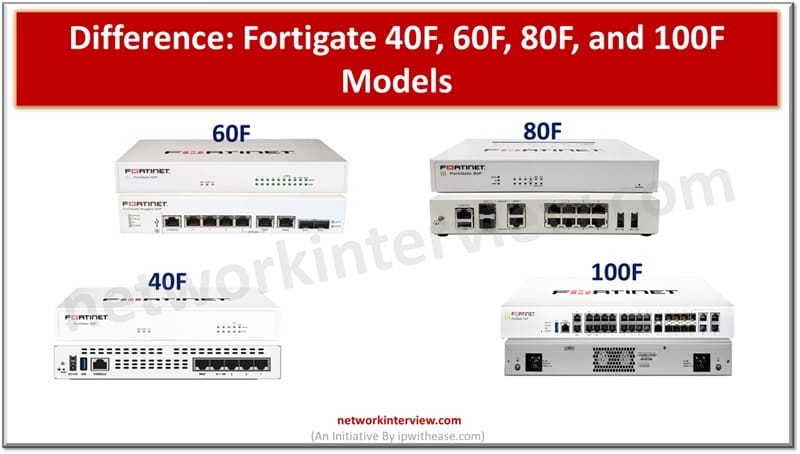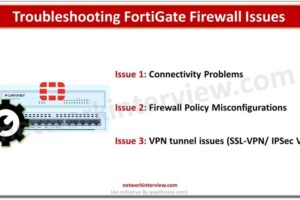
Difference between Fortigate 40F, 60F, 80F, and 100F Models
Fortigate 40F, 60F, 80F and 100F models differ in performance and scalability and are meant to address all types of businesses. While choosing a firewall one has to have a balanced approach and consider functionality and fit.
Fortigate Next generation firewalls (NGFW) are meant for data protection, users and assets across hybrid environments. These are high performance firewalls which provide a range of network security functions to enterprises.
Fortigate range of firewalls are meant for all business sizes be it small, medium and large networks. These are called NGFW because they go beyond simple packet filtering to block malicious traffic but also provide capabilities of intrusion prevention, anti-virus, web filtering, and application aware firewall functions.
In today’s article we will understand the difference between different models of Fortigate firewalls – 40F, 60F, 80F and 100G, their key differences and uses.
Fortigate 40F, 60F, 80F and 100F Models
Fortigate firewalls are built to address all business size needs depending on performance, scalability, workload etc. They are powered with intuitive FortiOS operation and proprietary FortiASIC processors for robust performance and security.
Choice of firewall would depend on number of factors as under:
- Number of users need to connect to network
- What is current and anticipated bandwidth requirements
- What security services you want to implement such as intrusion prevention, Antivirus, web filtering, SSL inspection etc.
- VPN services required for security connectivity of remote users
- Number of wired connections required
Comparison: Fortigate 40F vs 60F vs 80F vs 100F
| Features | Fortigate 40F | Fortigate 60F | Fortigate 80F | Fortigate 100F |
| Throughput | 5 Gbps throughput supported | 10 Gbps throughput supported | 20 Gbps throughput supported | 40 Gbps throughput supported |
| Threat protection | 600 Mbps throughput supported | 1.4 Gbps throughput supported | 2.8 Gbps throughput supported | 4.6 Gbps throughput supported |
| VPN throughput | 490 Mbps throughput supported | 6 Gbps throughput supported | 12 Gbps throughput supported | 20 Gbps throughput supported |
| Concurrent sessions | 7.0 lac concurrent sessions are supported | 1.2 million concurrent sessions are supported | 2.4 million concurrent sessions are supported | 3.2 million concurrent sessions are supported |
| New sessions | 35,000 new sessions supported | 40,000 new sessions supported | 60,000 new sessions supported | 80,000 new sessions supported |
| Slots (SFP) | No SFP port | 2 SFP slots | 2 SFP slots | 2 SFP slots |
| Ports (USB) | 1 USB (2.0) | 1 USB (2.0) | 1 USB (2.0) | 2 USB (2.0) |
| Power supply | 100 v – 240 v AC and external DC power | 100 v – 240 v AC and internally built | 100 v – 240 v AC and internally built | 100 v – 240 v AC and internally built |
| Rack mountable | It is not rack mountable | It is not rack mountable | It is not rack mountable | It is rack mountable |
| Other features | Built-in SD-WAN IPS
| High speed Secure VPN Advanced threat protection Web filtering
| IPS Anti-virus Cloud sandboxing Web and video filtering
| Web security IPS IOT device protection Data loss prevention
|
| Meant for | Small businesses | Small to mid-size businesses | Mid-size businesses | Large size businesses |
Download the comparison table: Fortigate 40F vs 60F vs 80F vs 100F
Tag:Fortigate



